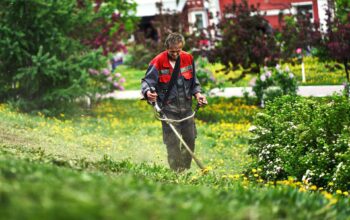In 2025, most UK dog owners are choosing a hybrid approach, mixing traditional kibble with organic and raw options to create a balanced and tailored diet for their pets. The days of simply pouring dry biscuits into a bowl and calling it a day are behind us. Today’s dog owners are more informed, more ingredient-conscious and more invested in the health and wellbeing of their four-legged companions than ever before.
The shift has sparked major changes in how the UK’s pet food industry operates, and it’s prompting a larger conversation about canine health, nutrition and how we define “good food” for dogs in the modern age.
What’s Driving the Shift in Dog Diets?
Several factors are pushing UK owners to rethink what they feed their dogs. Firstly, the humanisation of pets continues to play a big role. As people become more aware of their own food choices—favouring clean labels, organic ingredients and balanced nutrition—they are extending those same principles to their pets.
Secondly, the boom in pet ownership following the COVID-19 pandemic has created a generation of “pet parents” who treat their dogs more like family members than animals. These owners are willing to spend more on nutrition, provided it aligns with their ethical and health values.
And third, the rise of pet wellness content across social media has helped fuel curiosity and demand. Videos comparing raw diets to kibble, reviews of boutique dog foods and vet-led advice have made it easier than ever for owners to research and explore new feeding options.
Is Raw Feeding Really Better?
Raw feeding has become one of the biggest trends in the pet food market over the past few years. Supporters say raw food is more natural, more digestible and better for a dog’s skin, coat and energy levels. Raw diets typically include uncooked meats, bones, fruits and vegetables, often prepared fresh or frozen.
Yet the trend isn’t without controversy. Some vets warn that raw diets, if not carefully balanced, can lack essential nutrients or pose health risks from bacteria like salmonella. Others argue that commercial raw food products, which are now regulated and nutritionally complete, mitigate many of those risks.
Still, raw feeding is growing. According to a survey from the Pet Food Manufacturers’ Association (PFMA), 28% of UK dog owners now include raw food as part of their dog’s diet, up from just 17% in 2020.
Where Does Organic Dog Food Fit In?
Organic dog food has also gained traction, particularly among urban owners and environmentally conscious consumers. These products often feature sustainably sourced ingredients, no artificial additives and minimal processing, mirroring the organic food standards seen in human food.
Though typically more expensive, organic dog food is perceived as cleaner and safer. For some owners, it’s also a way to reduce their dog’s exposure to pesticides, antibiotics, and other potential toxins.
Brands like Lily’s Kitchen have helped popularise the category, offering organic wet and dry food lines that balance ethics, taste and nutrition. Many of these brands also produce healthy dog treats, ensuring consistency in feeding quality across meals and snacks.
Is Kibble Still Relevant?
Despite all the innovation, kibble is far from obsolete. It remains the most widely used form of dog food in the UK, primarily because it’s convenient, shelf-stable and cost-effective. However, it has evolved too.
Today’s kibble often includes high meat content, fewer fillers, added superfoods like blueberries or turmeric, and formulations tailored to breed, age, and lifestyle. Many pet owners now use high-quality kibble as a base and supplement it with fresh, raw, or organic options for added variety and nutrition.
This blended feeding approach, combining kibble with wet food, raw toppers and functional dog treats, is increasingly common and encouraged by many vets as a practical and balanced solution.
What’s Best For Your Dog?
Ultimately, there’s no one-size-fits-all answer. Every dog is different. What works for a high-energy spaniel might not be ideal for a senior labrador. That’s why many owners are working closely with vets and pet nutritionists to create feeding plans tailored to their dog’s unique needs.
What’s clear, though, is that UK dog owners in 2025 are more involved than ever in what goes into their dog’s bowl, and it’s not just about convenience anymore. It’s about ethics, quality and wellness.
The Bottom Line
Raw, organic, or kibble? In 2025, the answer is often all of the above. UK dog owners are blending tradition with innovation, driven by a deeper understanding of nutrition and a growing desire to give their dogs not just long lives, but good lives.
Whether it is adding fresh chicken to kibble, trying a raw week or opting for healthy dog treats made with superfoods, the modern dog diet is a reflection of how much we truly care. And based on the tail wags, they seem to approve.




